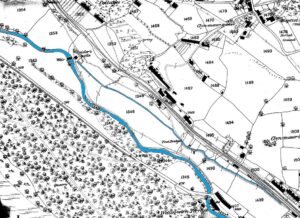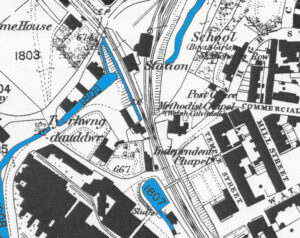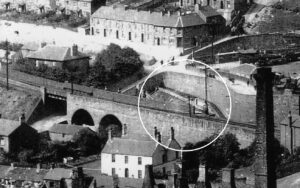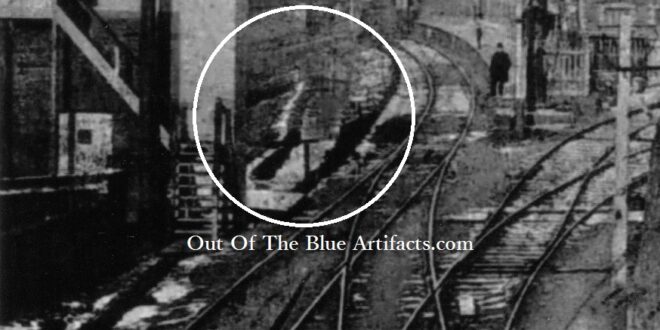Abertillery Tin Works Feeder.
During tin plate production at the Abertillery Tin Works and maybe before at the time the Iron Works were established by Mr Richard Walker, the works relied on a steady and forceful flow of water to power the machinery to manufacture such products.
 The land which the Abertillery Tin Works and earlier Abertillery Iron Works were situated was much higher in elevation than the River Ebbw, therefore the water could not be utilised from the river at this point, so plans were put forth at a very early date to construct a feeder starting from Spiders Castle in the Glan-y-dwr area which is now Harcourt Terrace, down the eastern side of the valley just below the railway line, down to the Station Hotel area, over the Tillery Stream through pipe work under the road and into the pond at Pond House for storage.
The land which the Abertillery Tin Works and earlier Abertillery Iron Works were situated was much higher in elevation than the River Ebbw, therefore the water could not be utilised from the river at this point, so plans were put forth at a very early date to construct a feeder starting from Spiders Castle in the Glan-y-dwr area which is now Harcourt Terrace, down the eastern side of the valley just below the railway line, down to the Station Hotel area, over the Tillery Stream through pipe work under the road and into the pond at Pond House for storage.
This feeder diverted water from the river at Spiders Castle which was channelled down the feeder. At Spiders Castle sluice the water was actually higher than the iron or tin works site. This sluice was actually 36′ feet higher above sea level than the Abertillery Tin Works site, enabling a good forceful flow of water to be achieved. This constant flow enabled the working of the huge water wheel which powered the machinery at the tin works.
 At the Station Approach which was where Station Hill is today there was another sluice (as seen on the map right) which diverted the flow of water into the Tillery Stream which flowed under the road at that junction. This sluice came into action when the pond was full at the tin works.
At the Station Approach which was where Station Hill is today there was another sluice (as seen on the map right) which diverted the flow of water into the Tillery Stream which flowed under the road at that junction. This sluice came into action when the pond was full at the tin works.
After the 1890’s when the major re-routing of the railway and construction of the new station took place, this feeder was lowered and took under station approach via a small concrete aqueduct into the works (as seen circled below).
 Seen (left) is a view from 1896 of the top of station approach showing the new concrete aqueduct for the feeder. The old Abertillery Railway Station can be seen behind the chimney stack on the right of the image.
Seen (left) is a view from 1896 of the top of station approach showing the new concrete aqueduct for the feeder. The old Abertillery Railway Station can be seen behind the chimney stack on the right of the image.
The new station is off to the left, north of the Lymes House surrounded by trees and the first Station Hotel can be seen at the top of the image just before its reconstruction.
Sanitary Conditions at the Tin Works.
During the latter half of the 19th century sewage which was being released into the River Ebbw from Blaina found its way into the feeder and into the tin works. This was a huge concern for the health of the workers as the effluent fouled the water wheels and also contaminated the water for processing. This problem was lessened with the construction of the sewage systems although quite a bit still found its way into the river. It was reported that the tin works management released the waste pickling acids, used in the tin plate manufacture process, into the river course on a regular basis to help break-up the excrement, combat odours and keep the water course flowing.
The Later Years.
Later in the 1900’s the building of Glandwr Street took place and the feeder was covered over with the new houses built upon it. This coincided with the introduction of steam power at the Abertillery Tin Works, making waterpower redundant, although the feeder was kept operational for a water supply to the works for tin plate manufacturing purposes for many years.
 Out Of The Blue Artifacts A Library of a lifetime of collecting
Out Of The Blue Artifacts A Library of a lifetime of collecting
